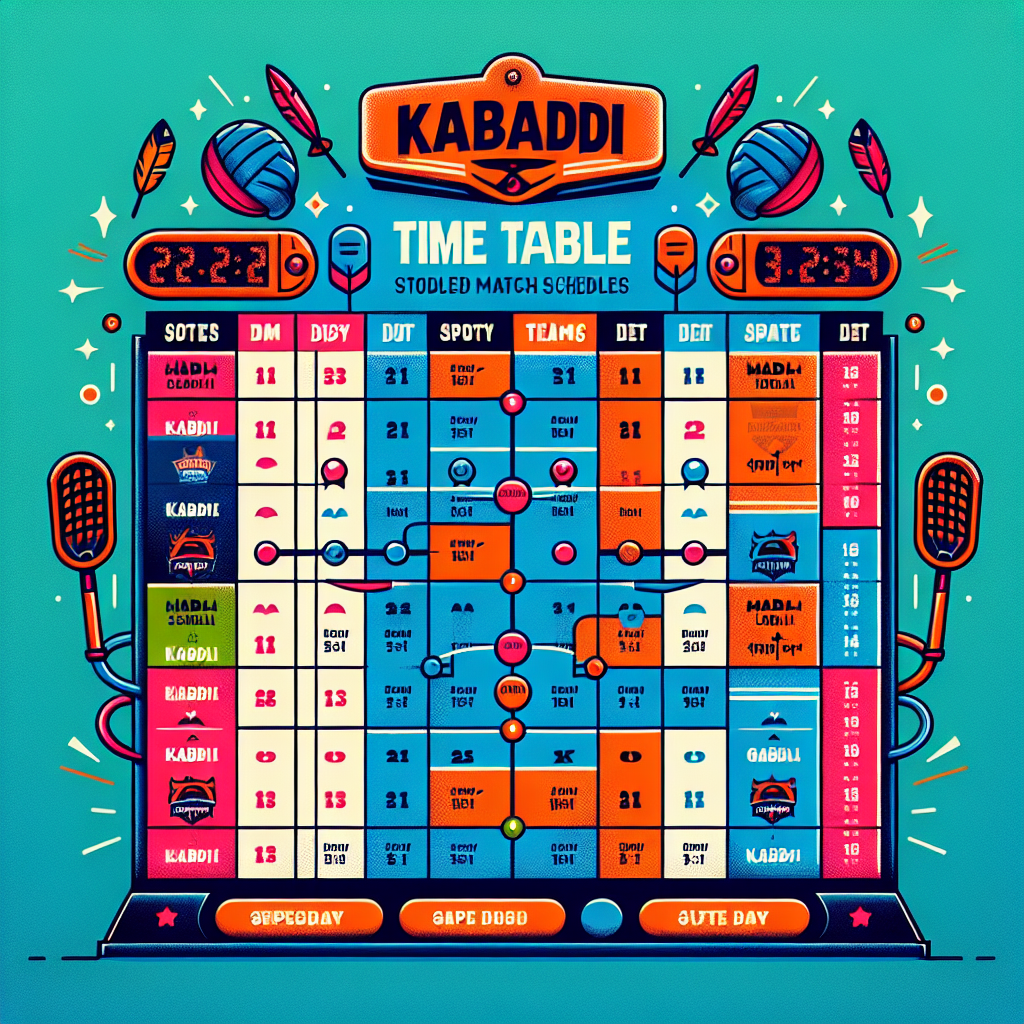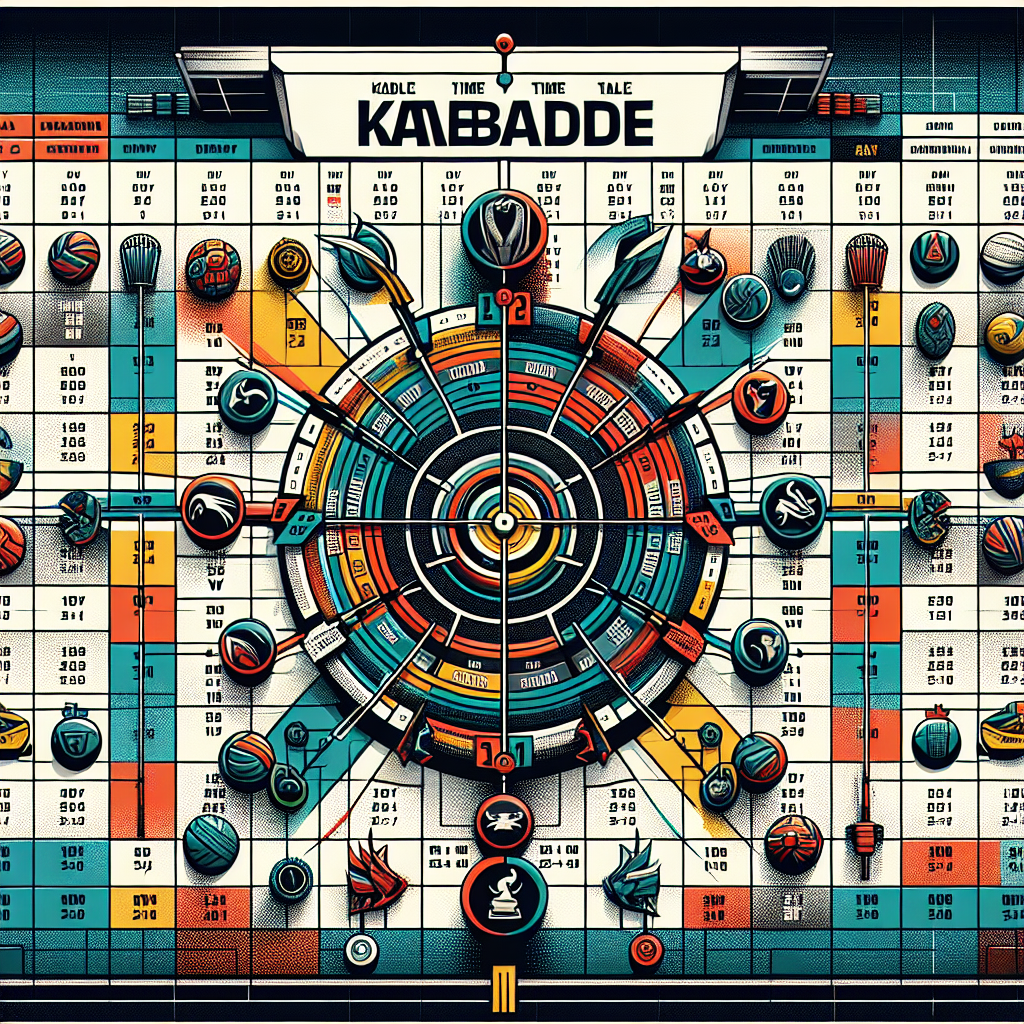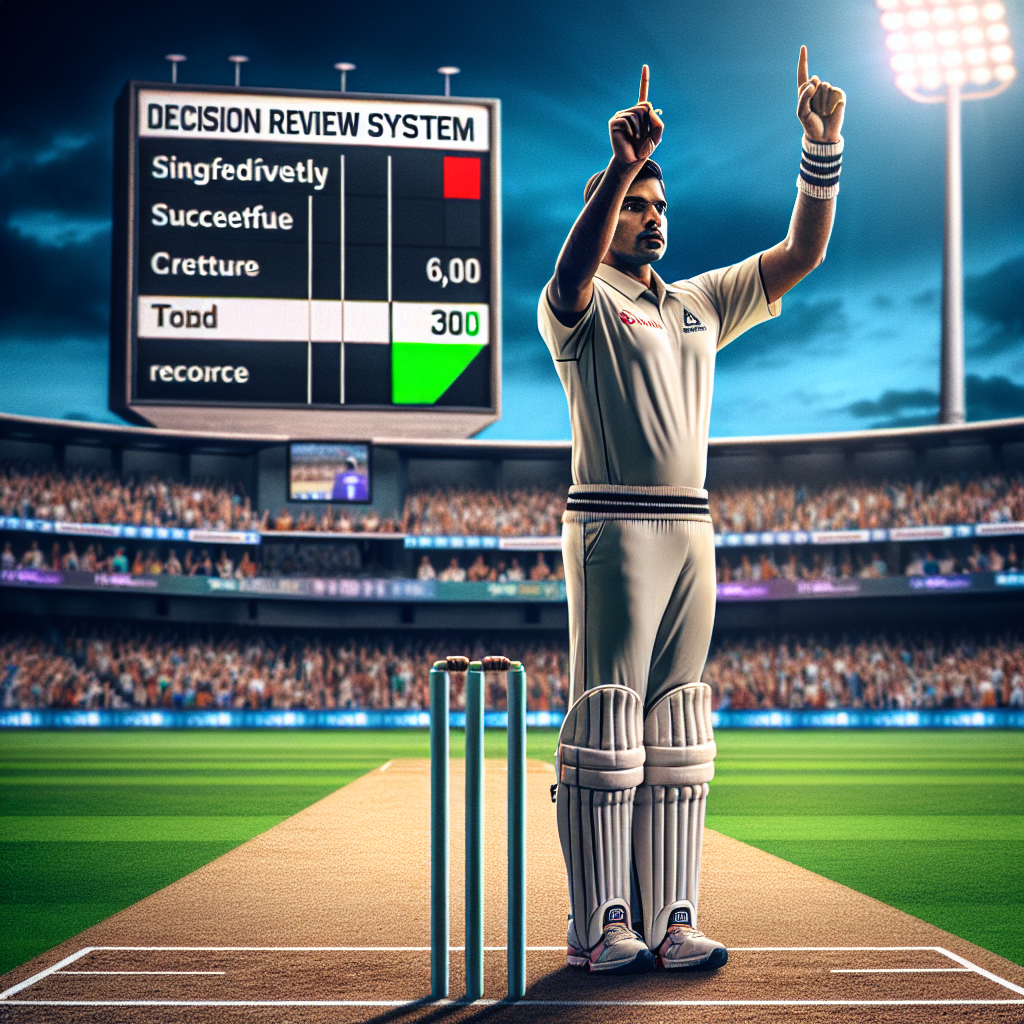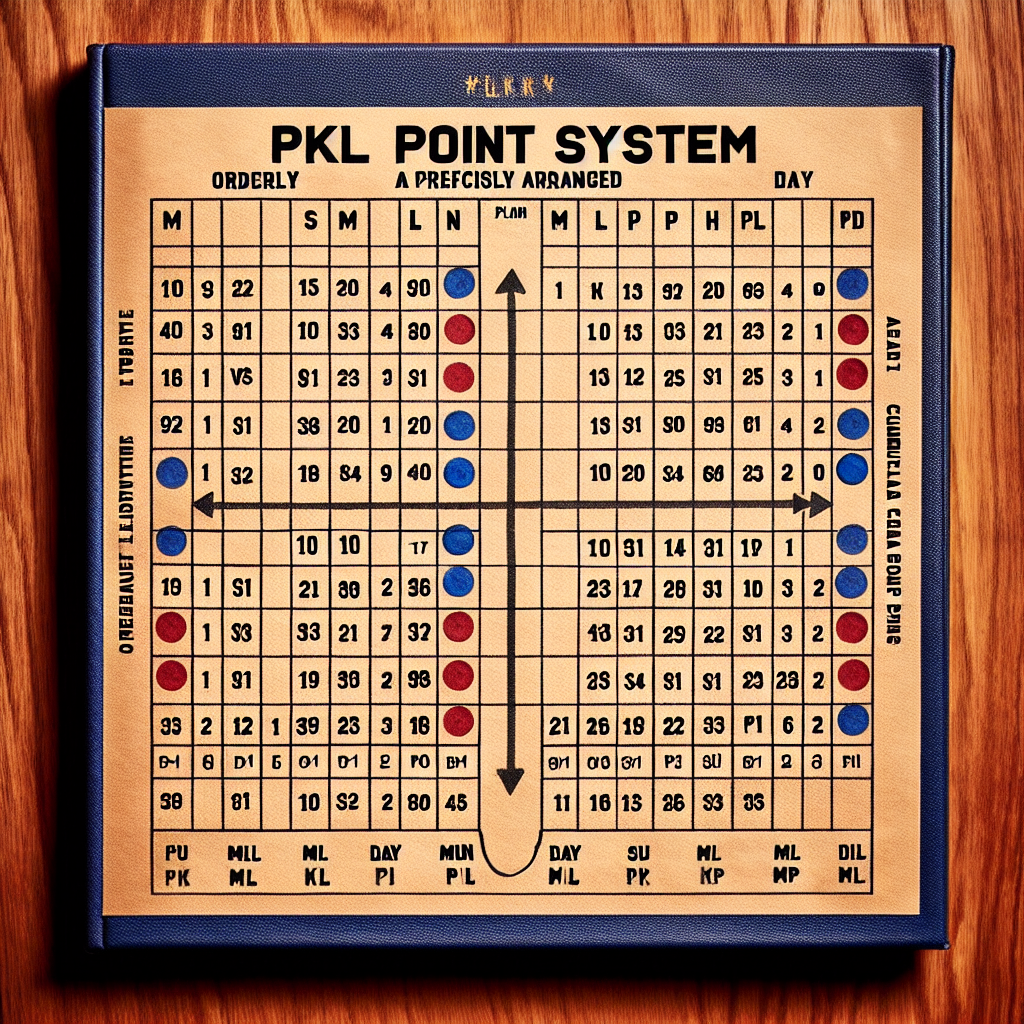Understanding the Vivo Kabaddi Time Table: A Comprehensive Guide

Kabaddi, a sport deeply rooted in Indian culture, has gained international recognition and popularity over the years. The Vivo Pro Kabaddi League (PKL) has played a significant role in elevating the sport’s status, attracting millions of fans worldwide. One of the most crucial aspects of the league is its time table, which dictates the schedule of matches and events. This article delves into the intricacies of the Vivo Kabaddi time table, offering insights into its structure, significance, and impact on the sport.
The Evolution of Pro Kabaddi League
The Pro Kabaddi League was launched in 2014, inspired by the success of the Indian Premier League (IPL) in cricket. The league aimed to bring kabaddi to the forefront of Indian sports and provide a platform for players to showcase their talent on a grand stage. Over the years, the league has expanded, with more teams and a larger fan base, making the time table an essential component of its success.
The Role of Vivo in Pro Kabaddi
Vivo, a leading global smartphone brand, became the title sponsor of the Pro Kabaddi League in 2017. This partnership has not only provided financial support but also increased the league’s visibility through extensive marketing and promotional activities. The Vivo Kabaddi time table is a crucial element in organizing the league’s matches and ensuring a smooth flow of events.
Structure of the Vivo Kabaddi Time Table
The Vivo Kabaddi time table is meticulously crafted to accommodate the league’s format, which includes multiple teams, venues, and matches. Understanding its structure is essential for fans, players, and organizers alike.
League Format and Scheduling
The Pro Kabaddi League follows a round-robin format, where each team plays against every other team. The league is divided into two phases: the league stage and the playoffs. The time table is designed to ensure that each team has an equal number of home and away matches, maintaining fairness and competitiveness.
- League Stage: The league stage consists of numerous matches spread over several weeks. Each team plays a set number of matches, with the top teams advancing to the playoffs.
- Playoffs: The playoffs include eliminators, qualifiers, and the final match. The time table for the playoffs is structured to build excitement and anticipation among fans.
Factors Influencing the Time Table
Several factors influence the creation of the Vivo Kabaddi time table, ensuring a balanced and engaging schedule.
- Team Logistics: The time table considers the travel and rest requirements of teams, ensuring they have adequate time to recover between matches.
- Venue Availability: The availability of venues plays a crucial role in scheduling matches. The time table is designed to optimize venue usage and accommodate local fan bases.
- Broadcasting Requirements: Television and digital broadcasting partners have specific requirements for match timings to maximize viewership. The time table aligns with these needs to ensure widespread coverage.
Impact of the Vivo Kabaddi Time Table
The time table of the Vivo Pro Kabaddi League has a significant impact on various stakeholders, including players, fans, and sponsors. Understanding this impact is crucial for appreciating the league’s success.
Player Performance and Well-being
The time table directly affects player performance and well-being. Adequate rest periods between matches are essential for players to maintain peak performance levels and avoid injuries. The time table is designed to balance competitive intensity with player health.
Fan Engagement and Experience
The time table plays a vital role in enhancing fan engagement and experience. By scheduling matches at convenient times, the league ensures maximum attendance and viewership. The time table also allows fans to plan their schedules around key matches, fostering a sense of community and excitement.
Sponsorship and Revenue Generation
Sponsors and advertisers rely on the time table to plan their marketing strategies and maximize brand exposure. A well-structured time table ensures high viewership, translating into increased revenue for the league and its partners.
Case Studies: Successful Implementation of the Time Table
Several instances highlight the successful implementation of the Vivo Kabaddi time table, showcasing its effectiveness in driving the league’s success.
Case Study 1: The 2019 Season
The 2019 season of the Pro Kabaddi League was a landmark year, with a meticulously planned time table that ensured a seamless flow of matches. The league stage featured 12 teams playing 132 matches over three months, culminating in an exciting playoff series. The time table’s strategic scheduling led to record-breaking viewership and attendance figures.
Case Study 2: Adapting to COVID-19 Challenges
The COVID-19 pandemic posed significant challenges to the Pro Kabaddi League, necessitating adjustments to the time table. The league successfully adapted by implementing bio-secure bubbles and rescheduling matches to ensure player safety and compliance with health guidelines. This flexibility demonstrated the time table’s resilience and adaptability in the face of unprecedented challenges.
Statistics: The Impact of the Time Table on Viewership
Statistics provide valuable insights into the impact of the Vivo Kabaddi time table on viewership and fan engagement.
- Viewership Growth: Since its inception, the Pro Kabaddi League has witnessed a steady increase in viewership, with the 2019 season attracting over 1.2 billion impressions across television and digital platforms.
- Attendance Figures: The league has consistently recorded high attendance figures, with stadiums often reaching full capacity during key matches.
- Social Media Engagement: The league’s strategic time table has contributed to increased social media engagement, with fans actively discussing matches and sharing content online.
Conclusion: The Significance of the Vivo Kabaddi Time Table
The Vivo Kabaddi time table is a critical component of the Pro Kabaddi League’s success, influencing player performance, fan engagement, and revenue generation. Its meticulous planning and strategic execution ensure a seamless flow of matches, maximizing the league’s impact on a global scale. As the league continues to grow, the time table will remain a vital tool in shaping the future of kabaddi and elevating its status as a premier sport.
In conclusion, the Vivo Kabaddi time table is more than just a schedule; it is a blueprint for success, driving the league’s growth and popularity. By understanding its structure and impact, stakeholders can appreciate the intricacies involved in organizing one of the world’s most exciting sports leagues.




